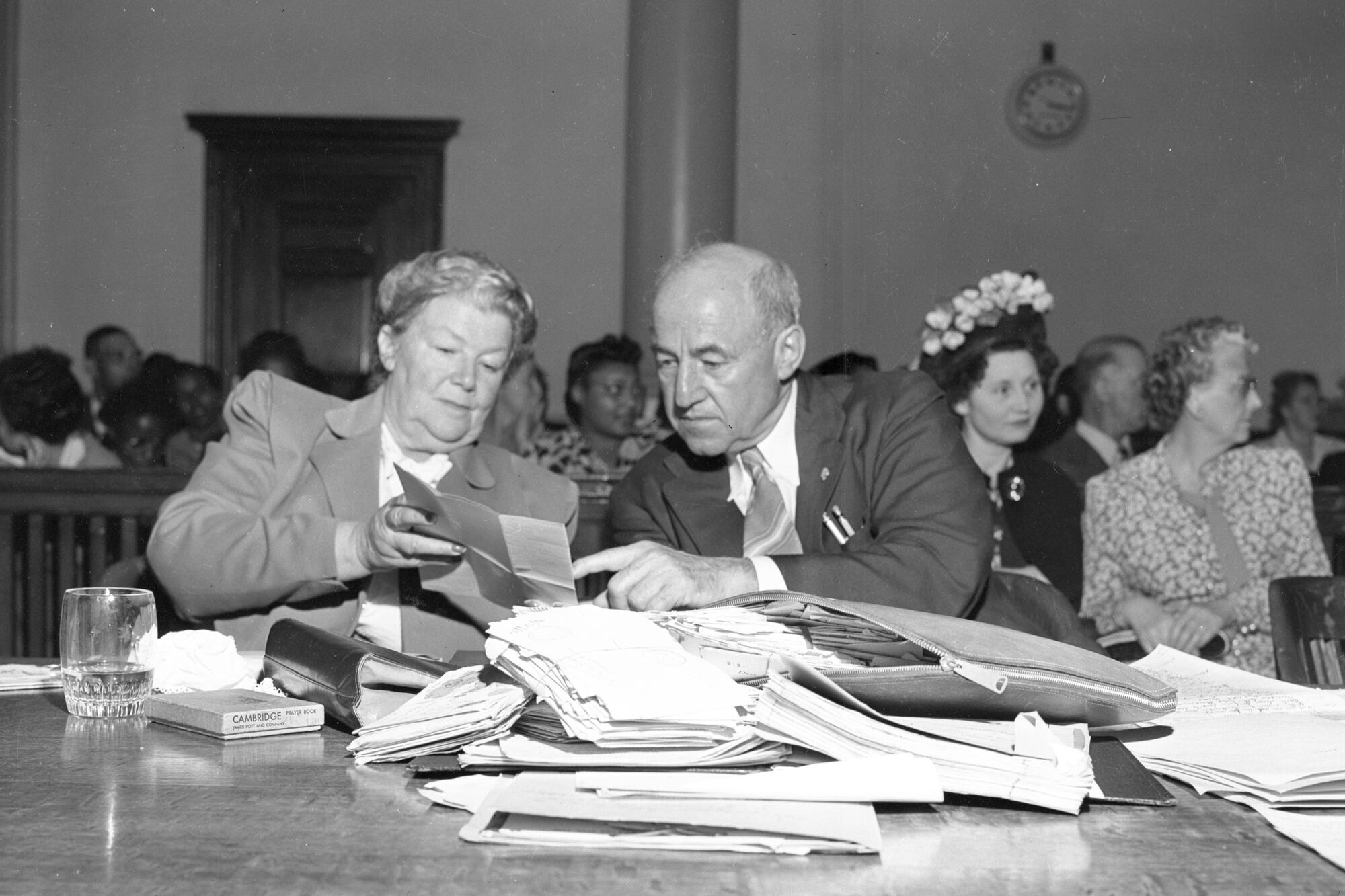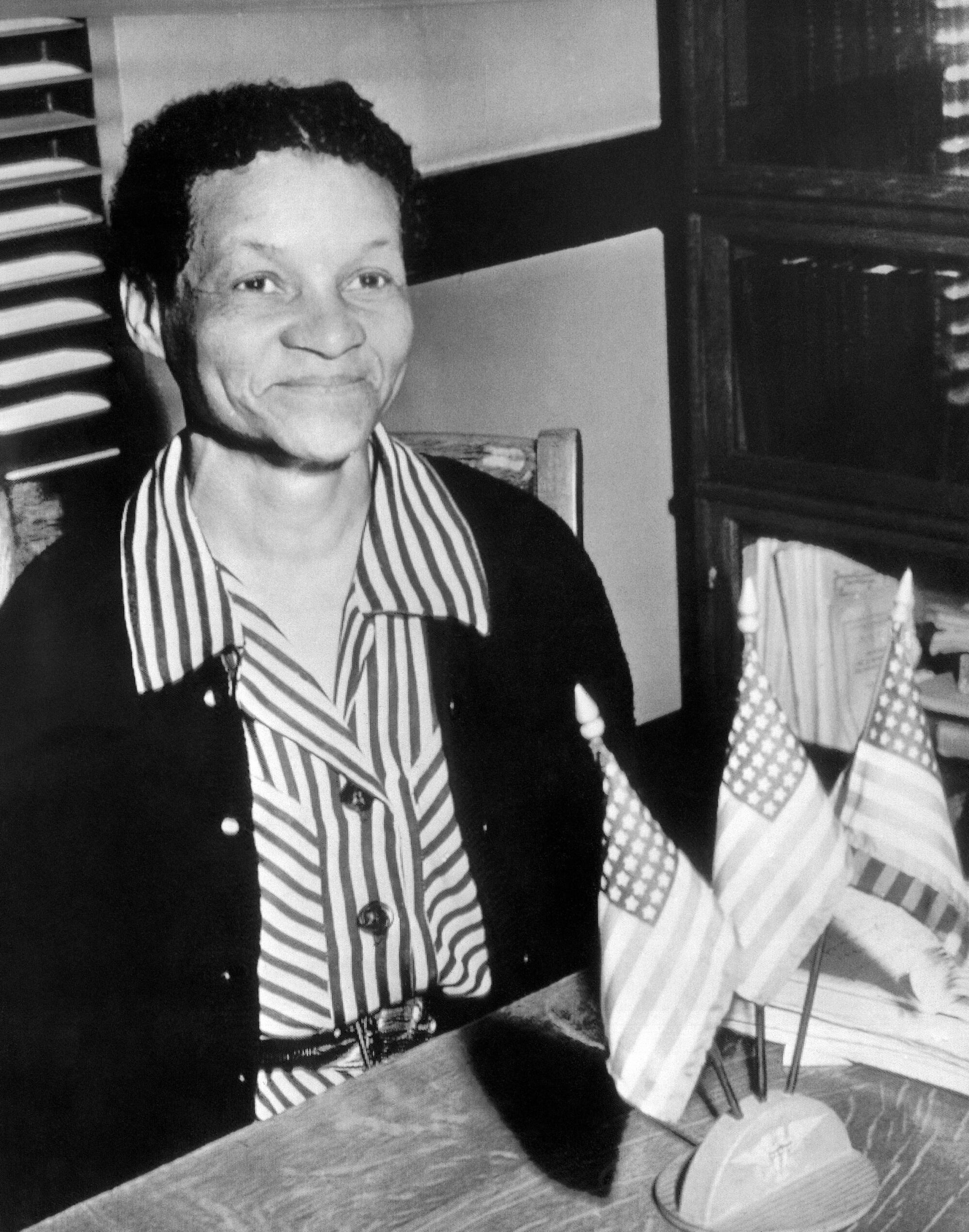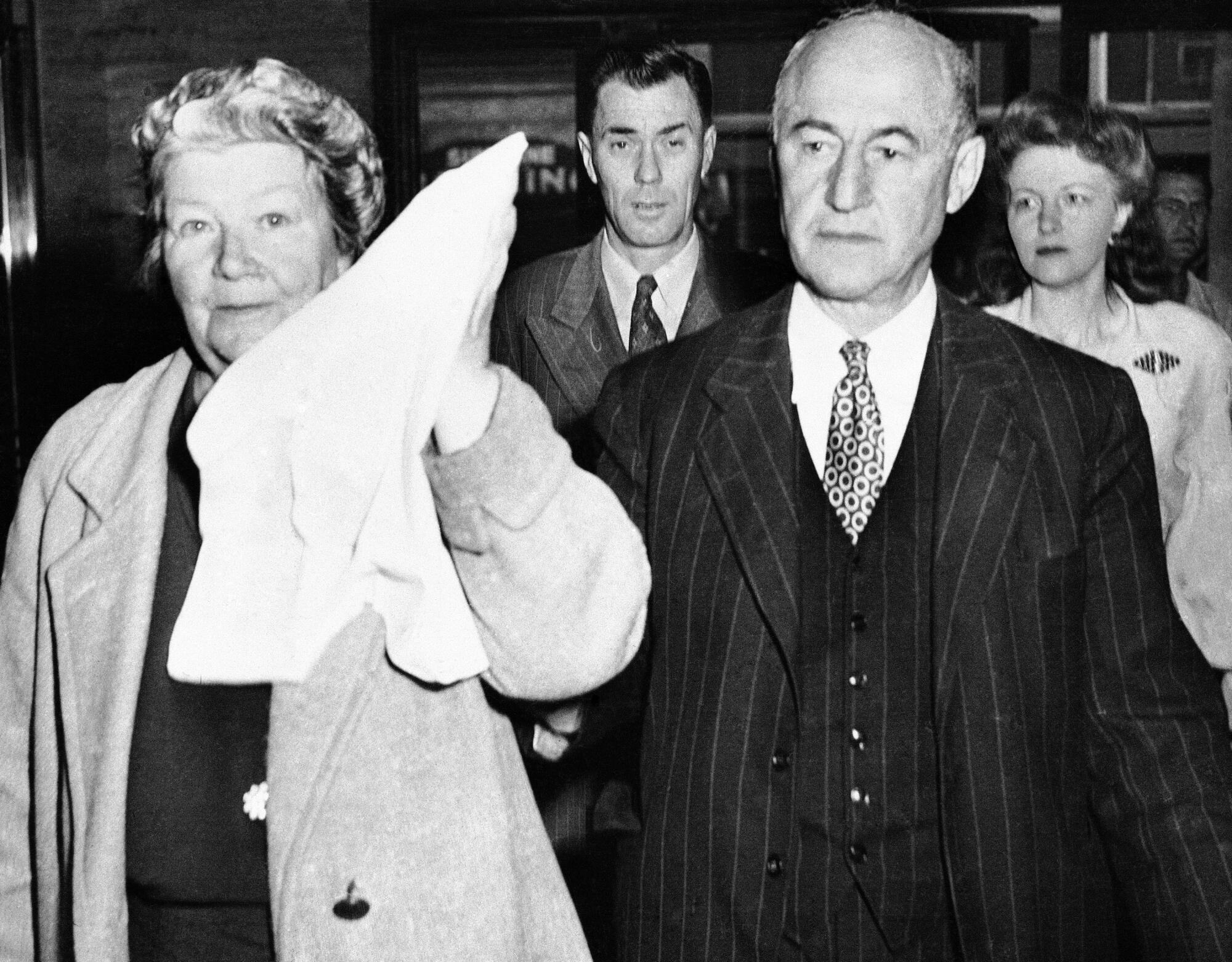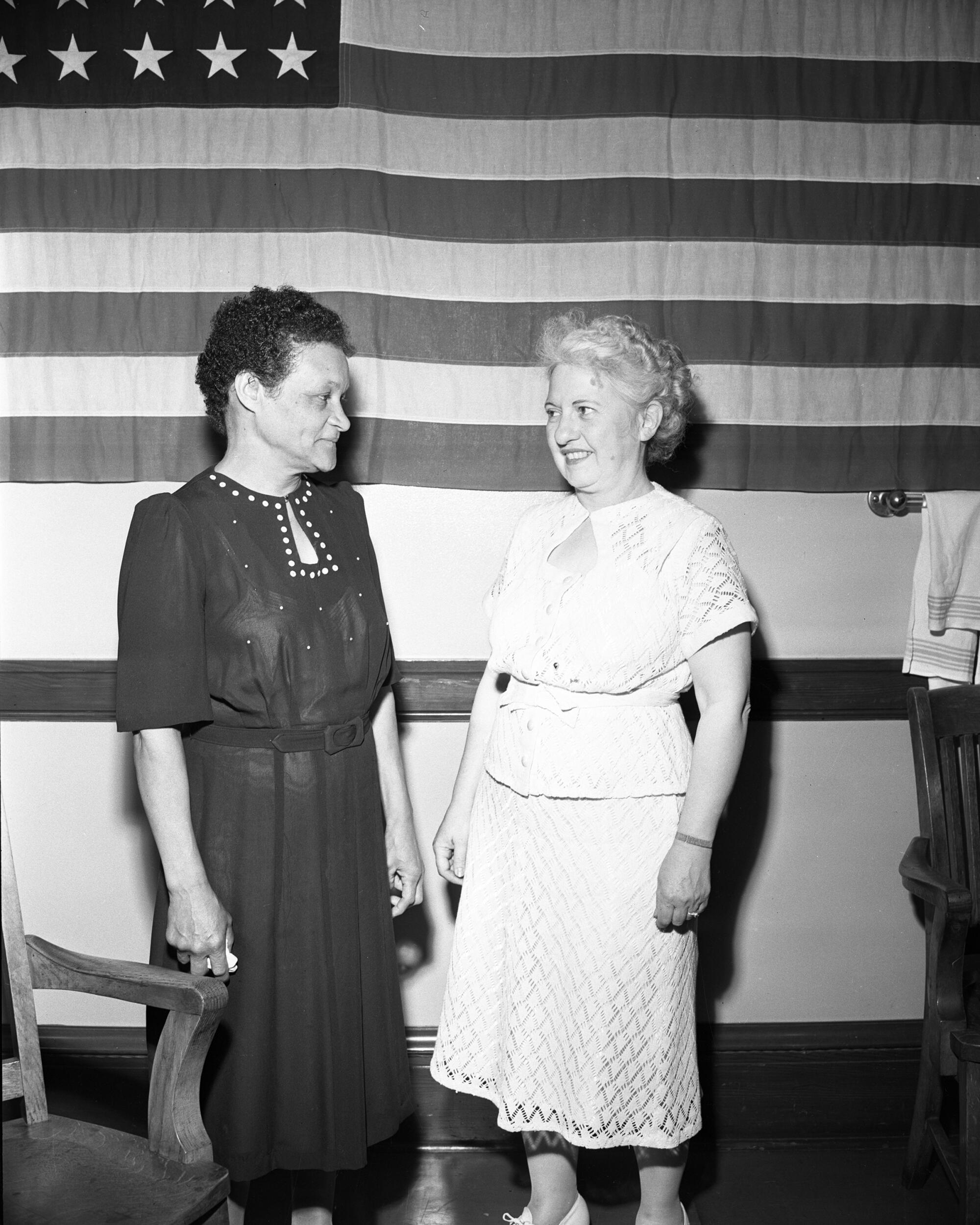
- Share via
CORONADO, Calif. — Seventy-five years ago, in the summer of 1947, slavery was remembered vaguely as a Southern thing, vanquished by the Civil War nearly a century earlier and buried in the dust of Dixie.
Then Alfred and Elizabeth Ingalls got arrested in Coronado.
This story is for subscribers
We offer subscribers exclusive access to our best journalism.
Thank you for your support.
The white couple, both in their 60s and recently arrived from Boston, were charged with keeping their Black maid, Dora Jones, in involuntary servitude — forcing her for 30 years to perform menial tasks from morning to night, beating her when she complained, clothing her in rags, and paying her nothing.
It was believed to be one of the first federal anti-slavery cases since Reconstruction, a harbinger of a newly assertive Department of Justice seeking to expand the definition of civil rights, especially for African Americans and other marginalized groups. Newspapers and magazines from coast-to-coast paid attention to the trial.
In San Diego, it was routinely front-page news. Reporters for the morning Union and the evening Tribune-Sun provided gavel-to-gavel coverage almost every day for a month.
The public was engaged, too. On several occasions, hundreds of people hoping to sit in the courtroom got up at dawn and waited for hours in line. Frustrated would-be spectators chanted “Let us in! Let us in!”
It was, the Union declared after it was all over, “one of the most unusual lawsuits in the annals of American jurisprudence.”
The case resonates today in the ongoing work of a California task force exploring reparations for Black Californians whose ancestors were directly affected by slavery.
“Although progress has been made, Black workers continue to face discrimination today,” the group said in a preliminary report issued last month. “The badges and incidents of slavery have carried forward.”
Dora Jones knew that all too well.

‘You owe me your life now’
Jones was born in 1890 in Athens, Ala., to parents who had been slaves. When she was around 12, she went to a missionary school not far from home and helped pay for her tuition by cleaning rooms. One of the rooms belonged to a teacher named Elizabeth Kimball.
A few years later, Jones was in the Washington, D.C., area, working for Kimball, now married and about to give birth. Later court testimony would disagree on whose idea the arrangement was, but Jones went voluntarily.
She was paid $8 per month, with half the money deducted in the early going by her boss — now named Elizabeth Harmon — as reimbursement for the train ticket purchased to bring Jones north.
Jones welcomed the work and enjoyed helping to raise the newborn. But in 1913 Jones became pregnant. The father? Harmon’s husband.
The way Jones described it under oath later, Walter Harmon forced himself on her regularly, a “kiss-less” relationship that went on for three years. “My part was just giving in to him,” she testified.
When a doctor suggested Jones go home to Alabama to have the child, Elizabeth Harmon objected. She didn’t want to lose her domestic worker. She suggested an abortion instead — illegal at the time — and made the arrangements.
After the operation, Jones remembered being told this: “You owe me your life now, because you have ruined mine.”
The Harmons soon divorced, and Elizabeth quickly got married again, to Alfred Ingalls, a lawyer, World War I veteran and future state legislator. They settled in the Boston area. Another daughter was born.
Jones continued to work for the family, now without pay. Neighbors and visitors to the house told federal investigators that she did all the chores during 16-hour days that sometimes ended with her sleeping on the floor in the kitchen. They saw her outside in the winter, shoveling snow without gloves or a jacket.
When she complained, she was beaten, the witnesses said. When she tried to run away, she was locked in the cellar.
In 1946, the Ingalls decided to retire and move to Coronado. They drove across the country in a new Packard and brought Jones with them.
They stopped in Berkeley, where their youngest daughter, Helen Roberts, lived. They stayed in a motel. When Roberts and her husband came by the motel for a visit, they found Jones sleeping in the car, crammed in among the suitcases in the backseat. She looked older than her 56 years, the daughter thought — frail, worn-out, neglected.

The FBI investigates
Police were called, and Jones left with Helen Roberts and her husband.
When the Ingallses discovered her missing the next day, they called police, too, and reported that she had been kidnapped.
Detectives brought everybody into the same room. Elizabeth Ingalls again told Jones how hard it would be for her to live on her own. She warned that Roberts and her husband wouldn’t have enough money to take her in.
One of the detectives asked Jones, if she was mistreated over the years, why hadn’t she left? “Because I came between Mrs. Ingalls and her first husband and I had caused her so much misery and trouble, I felt I should stay and make it up to her,” she said.
Police concluded this was a domestic dispute and let Jones decide what she wanted to do. She returned to the Ingallses, who continued on to Coronado, settling into the Hotel del Coronado for 30 days while they looked for a house to buy.
Jones slept in the Packard.
But the Ingallses’ troubles were just beginning. Someone had tipped off the FBI. A federal investigation ensued, one that fit into a broader campaign by the Department of Justice to expand constitutional protections.
On Feb. 24, 1947, FBI agents arrested the couple in Coronado and took the maid into protective custody.
A month later, the Ingallses were indicted by a grand jury and charged with violating the constitutional prohibition against slavery. They told reporters the case was absurd.
“Dora,” Elizabeth Ingalls said, “has always been very happy with us.”

A show of hands
A jury made up of nine men and three women was seated. None were Black. During opening arguments in late June 1947, the stage was set.
Lead prosecutor Ernest Tolin outlined 30 years of bondage, “a psychological chain of steel” forged in the aftermath of Jones’ pregnancy and abortion.
“Suffering another woman’s vengeance for 30 years was the price Dora Jones paid,” he said.
Defense lawyer Clifford Fitzpatrick said the Ingallses considered Jones a member of the family, “more of a protégé than a servant.” He blamed the case on overzealous FBI agents and prosecutors filling Jones’ mind with “scurrilous” allegations.
“This is not, as depicted by the government, a sword of Damocles hanging over the head of Dora Jones,” he said. “It has more suitably been a sword over the head of the Ingallses, hanging by the psychological thread of this primitive girl’s unstable mind.”
As the trial unfolded over four weeks, newspapers reported every detail of what was commonly known as “the slavery case,” often illustrating the articles with black-and-white photos of the key players.

Attorneys called some 40 witnesses to the stand, each offering a glimpse into the couple’s household. Daughters. Neighbors. Friends. Police. A postal worker. Psychologists.
Under questioning by prosecutor Betty Marshall Graydon, the first female U.S. Attorney in San Diego, Jones talked about how the “jail sentence hanging over me” kept her in the Ingalls household. She said she’d had one vacation in 30 years, a trip to Alabama paid for by her relatives there.
Graydon had Jones step off the witness stand to show jurors her gnarled and knotted fingers, encouraging the panelists to decide for themselves whether “they are hands of a person who was a member of the family, or whether they are the hands of a slave.”
Alfred Ingalls approached the jury box, too, smiling at Jones as he looked at her fingers. His wife stayed seated at the defense table, remarking out loud that she had already seen those hands for many years.
‘No real wants’
When it was her turn to testify, Elizabeth Ingalls was on the stand for parts of three days. The newspapers described her testimony as “exceedingly voluble.” Judge Jacob Weinberger admonished her several times to answer the questions without veering into soliloquies.
She’d already made an impression as emotional, openly sobbing when both her daughters testified against her. She’d followed another witness, a family friend, into a courthouse hallway, pushing her against the wall and calling her a “dirty, dirty, dirty little skunk.”
On the stand, Ingalls admitted that she “nearly dropped dead” when she learned that Jones was pregnant, and she was desperate to keep the information private lest it create a scandal. But she denied forcing the abortion. She said that was Jones’ idea, as was sleeping on the floor at home and in the car when they traveled.

The maid “had a heart of gold” and never cared about money, according to Ingalls. “Her main desire was to help,” she said. “Aside from bananas and candy, such as chocolate and gum drops, she really had no real wants.”
Ingalls blamed any beatings that happened on Jones, claiming that the maid taunted her about her first husband: “I know what men want and you don’t.”
She also blamed her daughters for the criminal case happening in the first place. “They had been working behind my back for six years to do this to me,” she said.
After likening Tolin, the prosecutor, to Soviet dictator Joseph Stalin, she said, “I hardly think the United States government ever intended that a citizen of my caliber should be treated this way.”
Her husband was more measured in his testimony, but he, too, blamed Jones for any mistreatment that occurred.
Jones was free to go whenever she wanted, Alfred Ingalls said, and her claims to the contrary during the trial were the result of “events, people and forces that entirely changed her. I’m sorry for her and I only hope we will be allowed to see her after this case is over.”
On July 18, 1947, after the lawyers on each side delivered three hours of closing arguments, Judge Weinberger denied a defense motion to dismiss the case and sent jurors off to begin their deliberations. His instructions included this definition of a slave:
“A slave is a person who is wholly subject to the will of another, one who has no freedom of action and whose person and services are wholly under the control of another, and who is in a state of enforced compulsory service to another.”

A quick verdict
It took jurors 30 minutes to convict Elizabeth Ingalls. They deadlocked for acquittal on her husband, with a majority deciding over the course of several votes that he, too, had been unduly influenced by her.
Jones wasn’t there for the verdict. She’d already left for St. Louis to live with a brother. Reporters waited for her at the train station there and told her about the outcome.
“It’s kind of hard not to feel bad about Mrs. Ingalls,” she said. “I was with her such a long time.”
As prosecutors weighed whether to try Alfred Ingalls again — they ultimately opted not to — the judge faced his own dilemma: what to do with Elizabeth Ingalls while she awaited sentencing. She faced a maximum of five years in prison and a $5,000 fine.
Her husband stood up in court, and with tears in his eyes said, “I urge it with every fiber of my being that this woman not be sent to jail. This is not the case of a hardened criminal, but a woman well past middle age.”
But prosecutors reminded Weinberger about testimony earlier in the trial from one of the Ingallses’ daughters. She said her father had told her that if they were convicted, he would kill his wife and then himself.
The judge put Elizabeth Ingalls in jail. The next day’s Union had a photo of her there, under this headline: “Steel Bars Cage Boston Socialite.”
She stayed incarcerated for 11 days, while reporters chronicled her fondness for fresh oranges and the details of a visit she had with her Episcopal priest from Coronado.
“Must I suffer until the day I die?” she was quoted as saying.
Weinberger fined her $2,500 and sentenced her to five years of probation with a requirement that she not harass any of the witnesses.

“She has been subjected to national disgrace because of the publicity and attention given to this trial,” he said.
He also did something unusual at the time, according to the constitutional scholars. He ordered the Ingallses to compensate Jones — back pay, in effect, to the tune of $6,000 (about $78,000 in today’s world). She reportedly took the money in an annuity.
Not long after the trial, the couple sold their home in Coronado and moved to Santa Barbara. Alfred died there in 1965. Elizabeth passed away in 1972.
Jones also died in 1972, in St. Louis. She was 82. She had resisted opportunities to capitalize on the notoriety of the trial, turning down paid speaking offers.
She told reporters she was glad to have her freedom, “but in many ways I’m not used to it.”
San Diego Union-Tribune research manager Merrie Monteagudo contributed to this story.
More to Read
Sign up for Essential California
The most important California stories and recommendations in your inbox every morning.
You may occasionally receive promotional content from the Los Angeles Times.














